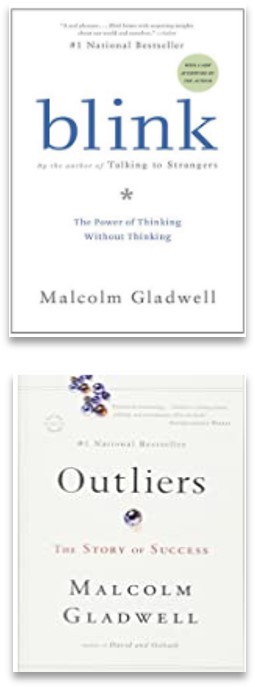8 (okay 9) Books I Highly Recommend

Yes! There’s A BOOK! — and there are more — good ones and one really good one coming soon: The Gentle SHIFT by — ta-daaaa — me!
The reason I wrote The Gentle SHIFT is because every time I opened a book, I didn’t get the information I was hoping was there: how to design for vitality, longevity, success and happiness connecting ancient wisdom and modern science and design.

Each of these books below hold some of what I brought together to define the FawnShui Method for a joyful life aligned with who we truly are: powerful beings to create a world of joy, ease and freedom.
Early in March, 2020, I did an week-long speaking tour of Baja California, Mexico to audiences of over 300 Architects, Interior Designers and Engineers about the power of color and design to impact our behavior. I am thrilled by how well-received the information was. Stay tuned to Instagram for photos and more @fawnchang.
Until my book is available (coming soon!) they were hungry to keep going and learn about the connection between design and behavior…and how to’s of the next step in design.
Here are just a few of my favorites I used to back up the science behind the FawnShui Method to design ease, health and well-being into the built environment and the human experience.
My highly recommended favorites:

1 Why We Buy I call this book “parking lot to point of purchase design.” This is called Neuromarketing today and in his book Why We Buy – The Science of Shopping, Paco Underhill provides an enormous amount of data culled by his team as he and they observe consumer behavior in a particular environment and then make changes to that environment and measures changes in sales.

2 Personal Space From the Book’s description: “Widely regarded as the classic text on user-centered design of public buildings and spaces, this book studies how people relate to the designed space around them and how the design of that space can affect their behavior. Its contents are based on comprehensive academic research, the conclusions it draws are highly applicable in real-world projects, and the style of presentation is lucid and interesting. The author, Robert Sommer, deals with topics such as privacy, spatial invasion, small-group ecology and looks at the role of design in settings that include airports, stations, hospitals and schools. When it was first published this book went through 25 printings in English alone. Although it was written when the study of behavior and design was just beginning to be appreciated, the lessons are still deeply relevant for today’s spatial designers and also important to the digital world in the design and analysis of shared digital spaces for co-operative work and multi-player games. Robert Sommer writes with authority and clarity. He has updated this new edition of his work with an introduction and detailed notes accompanying each chapter describing what has changed in the intervening years, and what has remained the same. “Your book will now become a standard at our office as it gives us added insight in design work”, Charles W. Pelly (President of the Industrial Designers Society of America 1991/92).”
3 A Pattern Language In this book, Alexander describes the design elements that create greater health, community and human joy. These are 248 ancient, time honored “patterns” of design that foster thriving.
From the book description: “his pivotal 1968 book, A Pattern Language, with Sara Ishikawa and Murray Silverstein, as well as the 1979 follow up, The Timeless Way of Building. Lesser known but as essential to understanding Alexander’s work is his theory of “systems generating systems,” which explains that systems as a whole are created by a “generating systems,” and, “if we wish to make things which function as ‘wholes,’ we shall have to invent generating systems to create them.”
My other favorites by Christopher Alexander and his research team:
- The Timeless Way of Building (1979)
- The Nature of Order Book 1: The Phenomenon of Life (2002)
- The Nature of Order Book 2: The Process of Creating Life (2002)
- An essay on the Art of Building and the Nature of the Universe
- The Nature of Order Book 3: A Vision of a Living World (2005)
- The Nature of Order Book 4: The Luminous Ground (2004)
Beautiful concepts and discussions/ideas, just like these 15 fundamental properties of life and nature: 1) Levels of scale 2) Strong centers 3) Thick boundaries 4) Alternating repetition 5) Positive Space 6) Good Shape 7) Local Symmetries 8) Deep interlock and ambiguity 9) Contrast 10) Graidients 11) Roughness 12) Echoes 13) The void 14) Simplicity and inner calm 15) Not-separateness

4 Health and Light Dr. John Ott was one of the first developers
of time-lapse photography working in the mid-1900’s with Walt Disney. As a result, he discovered the link between light and health, that improper light, specifically limited spectrum florescent lighting, was incapable of supporting health in plants, animals and humans. Full-spectrum lighting however was shown to increase children’s ability to calm and focus, perform better on tests and have 1/3 fewer cavities than those children in classrooms with limited-spectrum lighting. This is a dear and enjoyable read with intriguing data and implications for our health and well-being.
Must Reads on Neurobiology and the environmental influence:
These next three books are fundamental in a way that validates how our behavior is influenced by our subconscious patterning and programming, that genetics aren’t a death sentence and that environment has a bigger role than previously thought toward directing behavior. I love these two books, they are ground breakers.
5 The Biology of Belief I found the audio version, narrated by the author, delightful. (The book itself is great as well.) Especially the chapter where he says, “Yes, it truly is your mother’s fault.” Yikes…in my book I explain how to release yourself from the genetic programming of the environment to live a new life, without the programming of thousands of years of old patterning.

The Biology of Belief – Unleashing the Power of Consciousness, Matter & Miracles by Bruce Lipton, Ph.D.
From the book’s description: the latest scientific discoveries—and there have been a lot in the last decade. The Biology of Belief is a groundbreaking work in the field of new biology. Former medical school professor and research scientist Bruce H. Lipton, Ph.D., presents his experiments, and those of other leading-edge scientists, which examine in great detail the mechanisms by which cells receive and process information. The implications of this research radically change our understanding of life, showing that genes and DNA do not control our biology; instead, DNA is controlled by signals from outside the cell, including the energetic messages emanating from our positive and negative thoughts. This profoundly hopeful synthesis of the latest and best research in cell biology and quantum physics has been hailed as a major breakthrough, showing that our bodies can be changed as we retrain our thinking.

6 These are fascinating reads. In Blink, Gladwell explains how we are primed for behavior: programmed by our environments to respond in a specific way. He also describes “thin-slicing” – the ability to just KNOW the correctness or falseness in front of us, why most of our leaders are taller than the populace, and more.
Blink, The Power of Thinking Without Thinking and Outliers – The Story of Success, both by Malcolm Gladwell
7 In Outliers, Gladwell begins with a small community called Roseto, PA wherein despite an “unhealthy” diet, no one in Roseto died of heart disease or cholesterol, especially no one younger than 65. This “Roseto Effect” was created by the town’s designed lifestyle: no one was invited, all were welcome, no ostentatious display of wealth and no poverty, everyone was home and welcome. There is a LOT more in this book about how we are programmed for success–or not.
A few great books on Color:
- Albers, Josef, Interaction of Color, Singapore, 2006
- Babbitt, MD, Edwin D., The Principles of Light and Color: The Classic Study of the Healing Power of Color (1967) edited and annotated by Faber Birren. New York; University Books.
- Birren, Faber, (1982). Light, color, and environment, a discussion of the biological and psychological effects of color, with historical data and detailed recommendations for the use of color in the environment. Rev. ed. New York: Van Nostrand.
- Birren, Faber, Color Psychology and Color Therapy, New York, 1950
- Chevreul, Michel, The Principles of Harmony and Contrast of Colors, London, 1855
- Goethe, Johann Wolfgang, Theory of Colours, 1609
- Lindsay, Janice, All About Colour, Toronto, 2008 This is a delightful read by one of my dearest friends. Janice was a set designer and is now interior color specialist, called the Canadian Color Guru by the Globe & Mail, where a regular column appeared All About Colour.
Learn with Me: Let’s SHIFT
As I mentioned, the reason I wrote SHIFT is because every time I opened a book, I didn’t get the information I was needing: how to design for vitality, longevity, success and happiness.
Each of these books define an aspect of the FawnShui Method for aligning life with joy, ease and freedom.
Join me as we create a shift: designing for how the body reads and responds to spaces, to create ease, true body-wisdom beauty and vibrant lives.
Sign up to be alerted to the launch of SHIFT, and find out how to join me for the online six week course with me to learn how to SHIFT lives with design.
All my best to you and to everyone who’s lives we are designing,

Table of Contents
Categories
- Bedroom Design
- BioGeometry
- Body — Mind BODY Spirit Space
- Body's Design Needs to Thrive
- Bringing Beauty Back
- Business
- Color
- Color & Design
- Color Psychology
- Cool Stuff – Technology and Nature
- Creating Your Dreams
- Design for Health
- Design for Human Response
- Design to Thrive
- Embrace the Darkness Project
- Energy Update
- Family
- Green Living
- Health
- Healthy Home
- Healthy Work
- Home Buying & Selling
- Law of Attraction
- Life
- Life Surfing
- Mind
- Office Success
- Real Estate
- Sleep
- Space
- The Gentle SHIFT
- Trends
- Uncategorized

